
The Battle of Wilson's Creek, also known as the Battle of Oak Hills, was the first major battle of the Trans-Mississippi Theater of the American Civil War. It was fought on August 10, 1861, near Springfield, Missouri. Missouri was officially a neutral state, but its governor, Claiborne Fox Jackson, supported the South and secretly collaborated with Confederate troops.
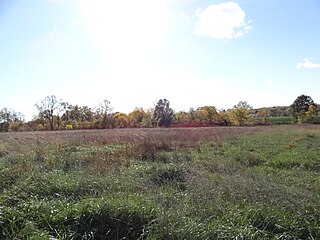
The Battle of Marais des Cygnes took place on October 25, 1864, in Linn County, Kansas, during Price's Missouri Raid in the American Civil War. It is also known as the Battle of Trading Post. In late 1864, Confederate Major General Sterling Price invaded the state of Missouri with a cavalry force, attempting to draw Union troops away from the primary theaters of fighting further east. After several victories early in the campaign, Price's Confederate troops were defeated at the Battle of Westport on October 23 near Kansas City, Missouri. The Confederates then withdrew into Kansas, camping along the banks of the Marais des Cygnes River on the night of October 24. Union cavalry pursuers under Brigadier General John B. Sanborn skirmished with Price's rearguard that night, but disengaged without participating in heavy combat.

The Battle of Westport, sometimes referred to as the "Gettysburg of the West", was fought on October 23, 1864, in modern Kansas City, Missouri, during the American Civil War. Union forces under Major General Samuel R. Curtis decisively defeated an outnumbered Confederate force under Major General Sterling Price. This engagement was the turning point of Price's Missouri Expedition, forcing his army to retreat. The battle ended the last major Confederate offensive west of the Mississippi River, and for the remainder of the war the United States Army maintained solid control over most of Missouri. This battle was one of the largest to be fought west of the Mississippi River, with over 30,000 men engaged.
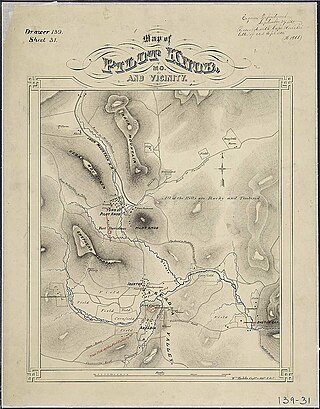
The Battle of Fort Davidson, also known as the Battle of Pilot Knob, was a battle of Price's Raid fought on September 27, 1864, near Pilot Knob, Missouri. Confederate troops under the command of Major General Sterling Price had entered Missouri in September 1864 with hopes of challenging Union control of the state. On September 24, Price learned that Union troops held Pilot Knob. Two days later, he sent part of his command north to disrupt and then moved towards Pilot Knob with the rest of his army. The Confederate divisions of Major General James F. Fagan and Brigadier General John S. Marmaduke drove Union troops under Brigadier General Thomas Ewing Jr. and Major James Wilson from the lower Arcadia Valley into Fort Davidson on September 26 and on the morning of September 27.
The Battle of Glasgow was fought on October 15, 1864, in and near Glasgow, Missouri, as part of Price's Missouri Expedition during the American Civil War. The battle resulted in the capture of needed weapons and improved Confederate morale, which had been dented after a defeat in the Battle of Pilot Knob.

The Second Battle of Independence was fought on October 22, 1864, near Independence, Missouri, as part of Price's Raid during the American Civil War. In late 1864, Major General Sterling Price of the Confederate States Army led a cavalry force into the state of Missouri in the hopes of creating a popular uprising against Union control, drawing Union Army troops from more important areas, and influencing the 1864 United States presidential election. Price was opposed by a combination of Union Army and Kansas State Militia forces positioned near Kansas City and led by Major General Samuel R. Curtis; Union cavalry under Major General Alfred Pleasonton followed Price from the east, working to catch up to the Confederates from the rear. While moving westwards along the Missouri River, Price's men made contact with Curtis's Union troops at the Little Blue River on October 21. After forcing the Union soldiers to retreat in the Battle of Little Blue River, the Confederates occupied the city of Independence, which was 7 miles (11 km) away.

The Battle of Little Blue River was fought on October 21, 1864, as part of Price's Raid during the American Civil War. Major General Sterling Price of the Confederate States Army led an army into Missouri in September 1864 with hopes of challenging Union control of the state. During the early stages of the campaign, Price abandoned his plan to capture St. Louis and later his secondary target of Jefferson City. The Confederates then began moving westwards, brushing aside Major General James G. Blunt's Union force in the Second Battle of Lexington on October 19. Two days later, Blunt left part of his command under the authority of Colonel Thomas Moonlight to hold the crossing of the Little Blue River, while the rest of his force fell back to Independence. On the morning of October 21, Confederate troops attacked Moonlight's line, and parts of Brigadier General John B. Clark Jr.'s brigade forced their way across the river. A series of attacks and counterattacks ensued, neither side gaining a significant advantage.
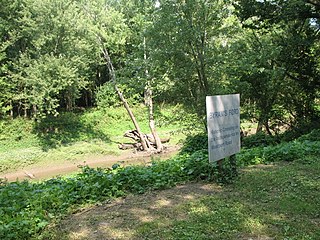
The Battle of Byram's Ford was fought on October 22 and 23, 1864, in Missouri during Price's Raid, a campaign of the American Civil War. With the Confederate States of America collapsing, Major General Sterling Price of the Confederate States Army conducted an invasion of the state of Missouri in late 1864. Union forces led Price to abandon goals of capturing the cities of St. Louis and Jefferson City, and he turned west with his army towards Kansas City.
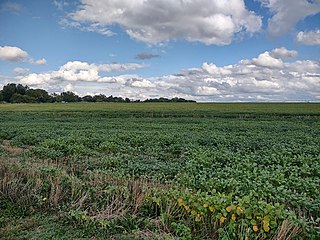
The Second Battle of Newtonia was fought on October 28, 1864, near Newtonia, Missouri, between cavalry commanded by Major General James G. Blunt of the Union Army and Brigadier General Joseph O. Shelby's rear guard of the Confederate Army of Missouri. In September 1864, Confederate Major General Sterling Price had entered the state of Missouri with hopes of creating a popular uprising against Union control of the state. A defeat at the Battle of Pilot Knob in late September and the strength of Union positions at Jefferson City led Price to abandon the main objectives of the campaign; instead he moved his force west towards Kansas City, where it was badly defeated at the Battle of Westport by Major General Samuel R. Curtis on October 23. Following a set of three defeats on October 25, Price's army halted to rest near Newtonia on October 28.

Price's Missouri Expedition, also known as Price's Raid or Price's Missouri Raid, was an unsuccessful Confederate cavalry raid through Arkansas, Missouri, and Kansas in the Trans-Mississippi Theater of the American Civil War. Led by Confederate Major-General Sterling Price, the campaign's intention was to recapture Missouri and renew the Confederate initiative in the larger conflict.

During the American Civil War, Missouri was a hotly contested border state populated by both Union and Confederate sympathizers. It sent armies, generals, and supplies to both sides, maintained dual governments, and endured a bloody neighbor-against-neighbor intrastate war within the larger national war.

Fort Davidson, a fortification near the town of Pilot Knob, Missouri, was the site of the Battle of Fort Davidson during the American Civil War. Built by Union Army soldiers during the American Civil War, the fort repulsed Confederate attacks during the Battle of Fort Davidson on September 27, 1864, during Price's Raid. That night, the Union garrison blew up the fort's magazine and abandoned the site. A mass grave was constructed on the site to bury battlefield dead. After the war, the area was used by a mining company, before passing into private hands and eventually the administration of the United States Forest Service. In 1968, the Battle of Pilot Knob State Historic Site was created as a Missouri State Park. The fort itself was added to the National Register of Historic Places in 1970. As of 2020, a visitors center containing a museum is located within the park. The museum contains a fiber optic display, as well as artifacts including Brigadier General Thomas Ewing Jr.'s sword. The fort's walls are still visible, as is the crater created when the magazine was detonated. A monument marks the location of the mass grave.
The following Confederate Army units and commanders fought in the Battle of Westport of the American Civil War. The Union order of battle is listed separately.
Slayback's Missouri Cavalry Regiment was a cavalry regiment of the Confederate States Army during the American Civil War. Originally formed as Slayback's Missouri Cavalry Battalion, the unit consisted of men recruited in Missouri by Lieutenant Colonel Alonzo W. Slayback during Price's Raid in 1864. The battalion's first action was at the Battle of Pilot Knob on September 27; it later participated in actions at Sedalia, Lexington, and the Little Blue River. In October, the unit was used to find an alternate river crossing during the Battle of the Big Blue River. Later that month, Slayback's unit saw action at the battles of Westport, Marmiton River, and Second Newtonia. The battalion was briefly furloughed in Arkansas before rejoining Major General Sterling Price in Texas in December. Probably around February 1865, the battalion reached official regimental strength after more recruits joined.
The capture of Sedalia occurred during the American Civil War when a Confederate force captured the Union garrison of Sedalia, Missouri, on October 15, 1864. Confederate Major General Sterling Price, who was a former Governor of Missouri and had commanded the Missouri State Guard in the early days of the war, had launched an invasion into the state of Missouri on August 29. He hoped to distract the Union from more important areas and cause a popular uprising against Union control of the state. Price had to abandon his goal of capturing St. Louis after a bloody repulse at the Battle of Fort Davidson and moved into the pro-Confederate region of Little Dixie in central Missouri.

The Collapse of Price's Raid: The Beginning of the End in Civil War Missouri is a 2016 book by Mark A. Lause and is the second volume in his series about Price's Raid, after Price's Lost Campaign: The 1864 Invasion of Missouri. The book, which is sourced to the Official Records of the War of the Rebellion and contemporary newspaper accounts, as well as to some secondary sources, takes up the story of Price's Raid in early October, after the goal of the campaign shifted, from being a full-scale invasion, to being a raid.

The South's Finest: The First Missouri Brigade from Pea Ridge to Vicksburg is a 1993 book written by Philip Thomas Tucker and published by White Mane Publishing Company. The book follows the history of the First Missouri Brigade of the Confederate States Army from its formation to the end of the Siege of Vicksburg. Reviewers praised the book for its use of primary source quotations and its detailed analysis of the civilian background of the unit's members. However, it was also criticized for excessively praising the unit, for being melodramatic, and failing to provide a quantitative analysis of what made the First Missouri Brigade the "finest" brigade in the Confederacy.
In Deadly Earnest: The History of the First Missouri Brigade, CSA is a 1991 book written by Phil Gottschalk and published by Missouri River Press. The book follows the story of the brigade from its formation through the end of the war and posits that the men of the unit were fighting for the South, not slavery. It is illustrated with both maps and photographs. Reviewers characterized the book as redundant and criticized its tendency to contain digressions into off-topic material. One reviewer questioned some of the book's conclusions and described it as "ancestor worship posing as history". Other reviewers acknowledged the book's flaws and described it as a positive addition to the bibliography of the American Civil War.
The 13th Missouri Cavalry Regiment was a cavalry unit that served in the Confederate States Army during the American Civil War. In early April 1863, Captain Robert C. Wood, aide-de-camp to Confederate Major General Sterling Price, was detached to form an artillery unit from some of the men of Price's escort. Wood continued recruiting for the unit, which was armed with four Williams guns, and grew to 275 men by the end of September. The next month, the unit fought in the Battle of Pine Bluff, driving back Union Army troops into a barricaded defensive position, from which the Union soldiers could not be dislodged. By November, the unit, which was known as Wood's Missouri Cavalry Battalion, had grown to 400 men but no longer had the Williams guns. In April 1864, Wood's battalion, which was also known as the 14th Missouri Cavalry Battalion, played a minor role in the defeat of a Union foraging party in the Battle of Poison Spring, before spending the summer of 1864 at Princeton, Arkansas. In September, the unit joined Price's Raid into the state of Missouri, but their assault during the Battle of Pilot Knob failed to capture Fort Davidson.
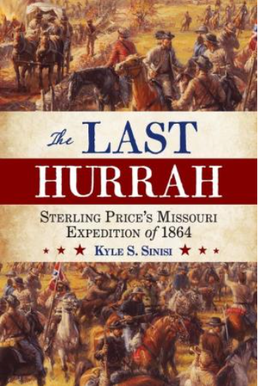
The Last Hurrah: Sterling Price's Missouri Expedition of 1864 is a 2015 book written by Kyle Sinisi and published by Rowman & Littlefield about Price's Missouri Expedition, an 1864 campaign of the American Civil War that failed to wrest control of the state of Missouri from the Union. Sinisi focused on the military expedition itself, but also covered political machinations that occurred during the expedition as well as topography and logistics. The Last Hurrah posits that the campaign should not be viewed as a raid due to its magnitude, that the Battle of Mine Creek had elements of a massacre, and that Missouri did not want to give up Union control. Reviewers praised the work, especially its ability to cover the campaign comprehensively while also discussing factors such as politics and the effects of guerrilla warfare.














